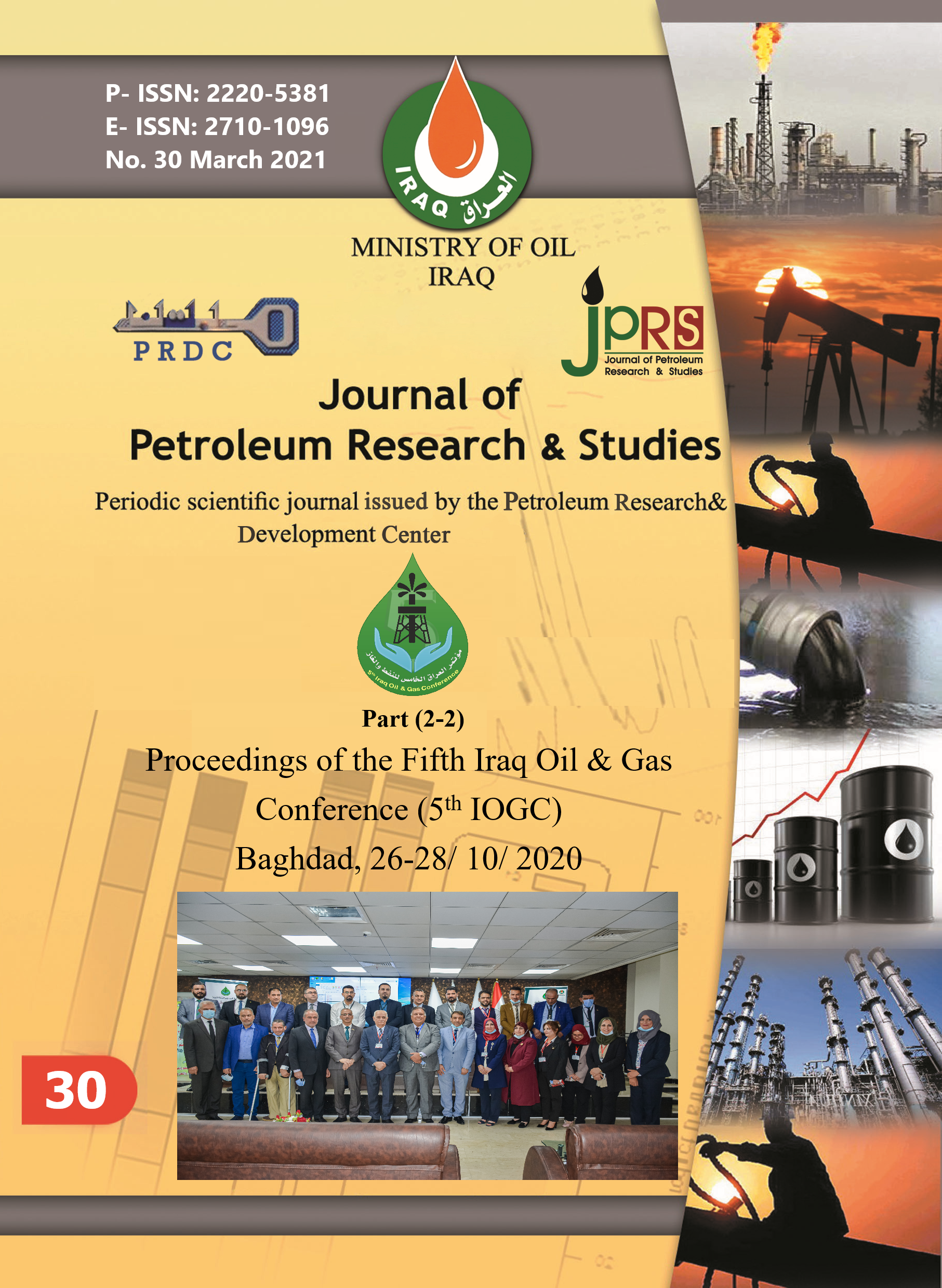Performance of Combined Electrocoagulation-Advanced Electrochemical Oxidation Used for Oil Field Produced Water Treatment
DOI:
https://doi.org/10.52716/jprs.v11i1.432Keywords:
Electro-Fenton; Produced water; Response surface methodology; COD removal.Abstract
Considerable amounts of produced water (PW) are usually accompanied with the
production of oil. This study proposed a combination of electrocoagulation (EC) - electro-
Fenton (EF) process for oxidation organic compounds in PW to reduce the chemical oxygen
demand (COD) to below regulation limits. The PW used in this study was collected from
oilfield in the Midland Oil Company. Pretreatment of the PW was conducted using batch EC
technique with aluminum electrodes to eliminate the suspended and dissolved solids and to
reduce the COD and treatment cost. Optimization of EC process revealed that optimum current
density, pH, and reaction time were 7.83 mA/cm2, 7.24, 20.40 minutes respectively. Under
these conditions the COD removal percentage was 73.97% starting from initial COD of 1730
mg/l.Batch and continuous electro-Fenton processes were investigated using dimensionally
stable anode Ti-RuO2/IrO2 and activated carbon fiber felt (ACFF) cathode. The effect of
crucial process variables on COD removal efficiency was investigated using response surface
methodology. A second order polynomial model equations were constructed and the results
was analyzed by the analysis of variance (ANOVA). It was concluded that a combination of
electrocoagulation followed by electro-Fenton process is effective for treating oilfield
produced water and further improvement can be achieved by photo assisting the process. A
total COR removal efficiency of 98% was achieved.
Downloads
Published
How to Cite
Issue
Section
License
Copyright (c) 2021 Rand Q. kadhem Al-Khafaji, Abdul Halim A-K Mohammed

This work is licensed under a Creative Commons Attribution 4.0 International License.














